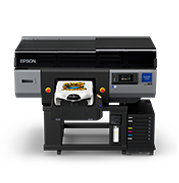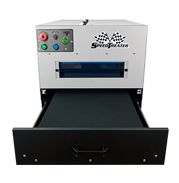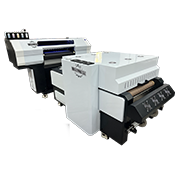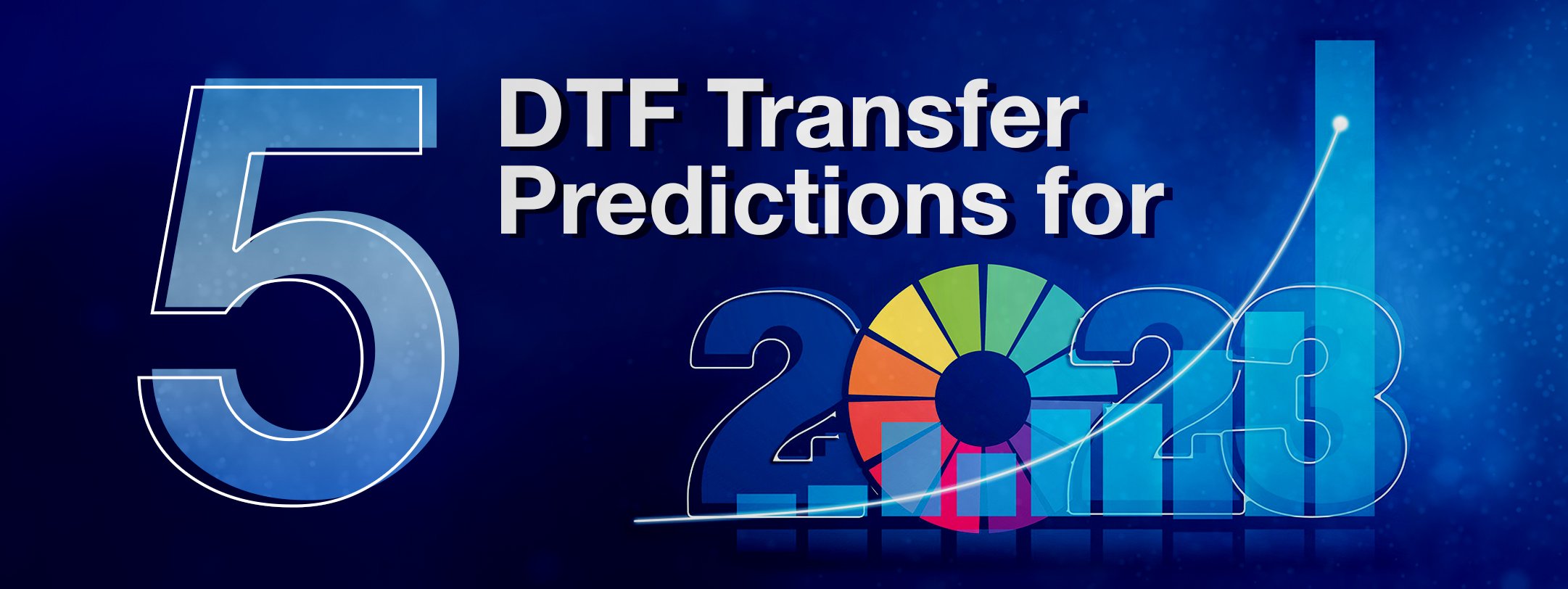5 DTF Transfer Predictions for 2023 (and How to Prepare!)
It’s that time of the year when it seems everyone is reflecting on the past, but also thinking ahead to the coming new year. And with those crystal ball future thoughts, we ponder what we all might expect to see that’s new or different. With the astronomical rise of Direct-to-Film (DTF) transfer decoration over the past couple of years, we’ll do our own crystal ball gazing. Here are five predictions on where DTF technology will be headed over the next 12 months.
Our 5 Predictions
An increase in overall popularity
Did you think DTF transfers reached the peak of popularity? They haven’t! We predict the popularity of this decoration method will continue to rise in 2023. Why is it so popular? These transfers give apparel decorators the ability to have full color graphics on one sheet of film that can be applied to almost any color fabric and every substrate including: 100% polyester, cotton-poly blends, tri-blends and more.
The early adopters to this technology have gone through their growing pains and are ready for increased production. More owners, sales reps and production managers of apparel decoration, branded merchandisers, and print and promo companies, will see the convenience of the process and be attracted to the potential profits.
More existing owners of DTG printers will see this potential as well. These operators are fortunate in that they already have both a DTG and DTF machine at the same time. As is the case with the Epson F2100 and F3070 DTG printers, these owners can use the same machines, the same inks and the same software to create DTF transfers. No conversions of any kind are required.
Many DTG owners who added DTF transfers to their customer offerings in 2022 found it necessary to add additional printers to keep up with demand from their customers. This adding of printers will continue exponentially in 2023.
Part B of this prediction is this: DTF will be an addition to current production opportunities, not a replacement. With every new technology in our industry, there are those who say, “This is the end of screen printing. This is the end of plastisol transfers. This is the end of DTG printing.” Current decoration methods and technologies are not going away. But we can also embrace new technologies such as DTF decorating to expand our abilities and methods.
An increase in cheap converted desktop printers - AVOID
With the demand for DTF transfers on the rise, more people will be tempted to try the DIY method. Buying a desktop inkjet printer and converting it themselves into a DTF transfer printer will likely end in frustration. Just because a few people on YouTube can do it doesn’t mean you should. As in all new production methods, you will most certainly have some challenges and setbacks if you try going the “cheap route”.
Who will support you when you run into a problem? Not the company whose name is on the front of the printer! You will spend hours watching more YouTube videos from “experts” who have 9-12 months more experience than you. They will prescribe inventive “work-around-solutions” to temporarily keep the printers in production. Just because it’s possible doesn’t mean it’s profitable. Put another way, just because you can doesn’t mean you should. FACT: These printers were designed and engineered to be paper printers, not film printers.
As a side note, these converted desktop printers can be very slow. By “very slow” we mean you may be looking at producing only three transfers per hour, 24 transfers in an eight hour day! No one can operate at this incredibly slow production rate and be profitable.
An increase in cheap imported desktop printers converted for you - WARNING
Because DTF transfers will continue to gain in popularity, we also haven’t seen the last of the cheaply made Chinese desktop inkjet printers that were originally engineered to be cheap or knock-off paper printers. Unfortunately for some buyers, these printers are being converted to be DTF printers as well.
The issue in our post pandemic, supply-chain-stretched world is the poor quality of manufacturing. China and other countries have flooded the market with low quality printheads, motherboards and compromised circuitry. Many consumers are concerned about UL & CE ratings and certifications on these electrical parts. (This could be an insurance concern for your business as well.) Searching the internet for new printheads that often fail in the first 3-6 months or any other replacement parts while your printer is down is not a path to profitability.
You got a great price on the printer but what about the service after the purchase? Were you properly trained? Were you instructed on the optimal printing environment? Who’s there to train you and will they be in your time zone or at least your country? Are they available by phone or Zoom and do they even speak your language? What kind of warranty is offered? Do they even have a warranty?
This is new technology and many individuals or companies who want to produce DTF transfers have little experience with inkjet printers, ink systems, adhesives, etc. Smart money says your investment should be with equipment and companies who can help you along in this new journey.
New & improved inks, adhesives and films
As with all new technologies, the processes will improve. Just like the advances in DTG decoration after being introduced less than 20 years ago, fine tuning of all DTF components will happen in the coming year.
New discoveries like brighter inks, specialty inks, finer adhesive powders that will feel softer, and even the films will continue to evolve. Sparkle films will be a big hit with consumers this year. Adhesive powder application will evolve greatly in 2023 as well.
Larger production units to increase speed and overall output
More apparel decoration companies will see the potential for dedicated DTF transfer production. Larger and faster printers with similar output to automatic screen printing production will continue to be designed from the ground up. Unlike high production screen printing though, individual transfer customization will make DTF printing more appealing in the new one-off decorating world.
These production packages will be designed to go together as all-in-one systems. The packages will include the inkjet printer, powder application, a shaker, and conveyor dryer to cure the ink and melt the powder. Overall output will increase to meet ever increasing demand for DTF transfers.
Our predictions here are more inevitable than crystal ball gazing. One thing is certain though; DTF printing is the newest and now permanent part of the garment decorating industry.















